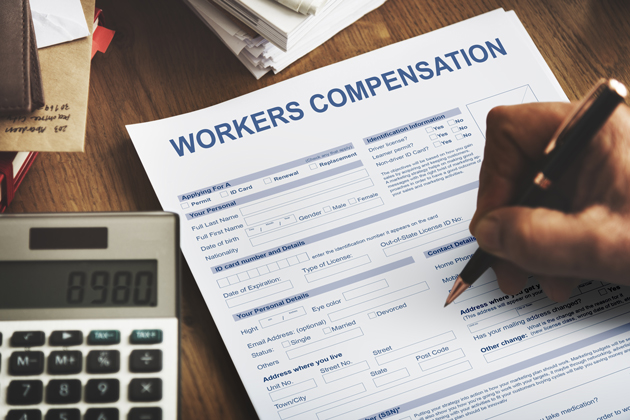
Every year, risk professionals, insurance company claims teams and third-party administrators collectively spend anywhere from several hundred to more than 1,000 hours conducting workers’ compensation claim reviews—unfortunately, too often with suboptimal results.
That led the Aon Risk Solutions claims consulting team to conduct an extensive study of claims reviews to find out what is broken in the process and determine how to fix it. This included surveys of more than 100 risk management, finance and HR executives and nearly 20 insurance company and TPA claims administrators.
Based on the study’s initial findings, there are 10 best practices to improve the overall claim review process from the planning stage to completion and follow up. Collectively, they address specific issues that have prevented claim reviews from delivering the desired results. These practices apply whether the aim is to accelerate claim closures, make targeted incident-reducing adjustments to operations, reassess reserves and improve financial/balance sheet impacts, or achieve other positive outcomes.
Phase I: Pre-Claim Review/Planning
1. Set objectives: The research uncovered little effort at the front end of the claim review process to align with specific objectives. Traditionally, there is little or no effort to understand what employers want to accomplish through the claim review process. So, employers should determine objectives for any claim review and prioritize them. Whether the objectives are financial, operational or administrative, they should be clearly articulated and ordered so the entire review process can be structured around them.
2. Align all elements of the claim review with objectives: Leveraging data and analytics (as practical), align the selection of claims to include in a review and the roles of the review participants to meet the specific objectives.
3. Apply a data-driven selection criteria based on objectives: For example, an employer with a pending actuarial study in advance of a workers’ compensation insurance program renewal might focus on the reserve adequacy/appropriateness of its pending inventory. A corresponding data and analytics strategy will inform claim selection so “suspect” claims will be included in the review to ensure financials (total incurred value) reflect the specific exposure.
4. Be strategic when selecting review team members: If the objective of the review is to achieve as many claim closures as practical, then the team might include more senior levels of authority to ensure provision of settlement authority doesn’t hinder claim progression. If there is a greater focus on workplace safety and injury prevention, EHS professionals should be included.
Phase II: Conducting the Claim Review with a Focus on Results
5. Avoid the trap of over-emphasizing large legacy claims: Many claim reviews automatically focus on trying to close or settle legacy claims while devoting fewer resources to smaller or more recent claims that may have the potential to expand significantly into larger costs. By closing out more of these claims earlier, when they may be easier to resolve, risk professionals can avoid substantially larger costs in the future.
6. Recognize the value technology-driven data/analytics bring to decision-making: Notably, by applying data and analytics to a portfolio of claims, risk professionals can quickly assess a wide range of factors to evaluate claims accurately and flag potentially significant cost-drivers that can affect a claim’s duration and severity. These might include co-morbidities, employee age, work history and tenure; position and duties, including relevant physical demand assessments; work location and legal jurisdiction; nature of injury; treatment provided and ODG factors; among other variables that can impact claim duration, cost and outcome.
7. Seize opportunities to improve workplace safety: Whenever operational improvements are a primary objective of a claim review, data and analytics can help identify significant injury trends by location, job function and worker demographics to pinpoint where implementing targeted safety, ergonomics, training and other injury and accident prevention measures can have quantifiably reduce injury frequency and severity.
8. Digitize claim status reports: Many stakeholders cling to the traditional paper claim files and status reports because that is the way it has been for years. It is a time-consuming process to print, collate, bind and deliver hardcopy status reports, which claim administrators typically factor into how they price your program. Digitizing claim files and reports not only will help speed the review process and reduce administrative costs, but will also facilitate the application of data and analytics that will help you improve outcomes and drive results.
9. Establish standards for claim updates: Preparing traditional claim status reports generates redundancies and drains resources. Many employers complained that the reports were wordy, contained superfluous or irrelevant claim data and took too long to extract relevant information. Instead, modern claim systems have robust summary capabilities which make traditional paper reports obsolete and facilitate the application of data and analytics to help speed decision-making and results. Future claim reviews will transition from paper status reports to virtual, real-time status updates directly from the administrators claim system, dramatically improving efficiency.
Phase III: Post Review Reporting and Follow-Up
10. Conduct ongoing post-review progress monitoring: Use technology-driven systems and applications to track claim management progress from one review to the next. Provide concise claim status summaries that facilitate thoughtful, data-driven decisions and provide greater insight about issues that lead to protracted claim resolution and closure.
If risk professionals are able to apply some, if not all, of these best practices, they will be well on the way to making dramatic improvements in the ROI and value they gain from their claim reviews.
